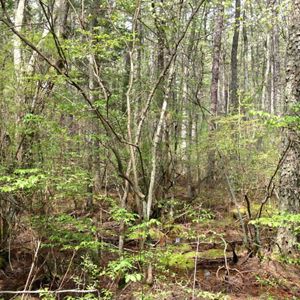Description
Only miles from the highest point in New Jersey, Mashipacong Bogs Preserve is situated on the western side of the Kittatinny Mountain Range and borders High Point and Stokes state parks. The habitat is hilly and rocky, with a mixed-oak forest. On the preserve's northern edge lie two glacial bogs, known as Lost Lake Bogs, which are surrounded by a large black spruce-tamarack swamp—the highest quality swamp of its kind in the state. On the site's southeastern side is Mashipacong Pond.
The preserve includes the best northern boreal bog ecosystem in New Jersey. Rare plant species, such as northern yellow-eyed grass (Xyris montana), bog rosemary (Andromeda glaucophylla), creeping snowberry (Gaultheria hispidula), pale laurel (Kalmia polifolia), dwarf mistletoe (Arceuthobium pusillum) and beaked sedge (Carex rostrata) flourish at this site. Black bears, beavers, hawks, waterfowl and songbirds also make their homes here.
While the preserve is open to the public, no formal trails exist. If you are interested in scheduling a visit, please contact the New Jersey field office.





